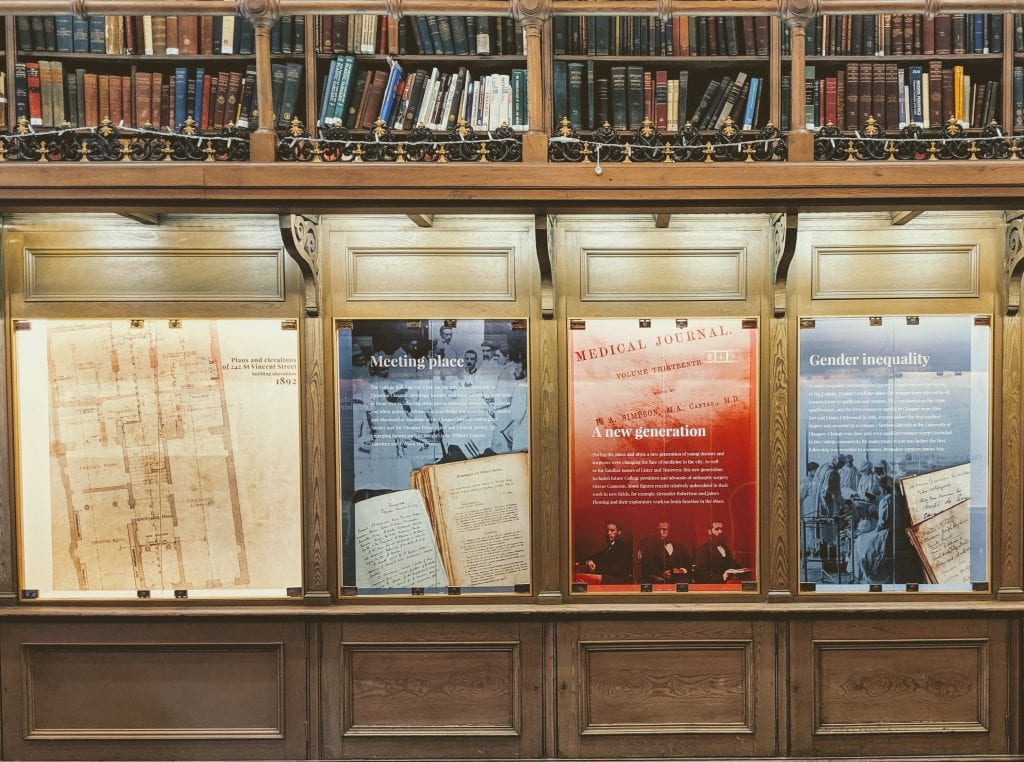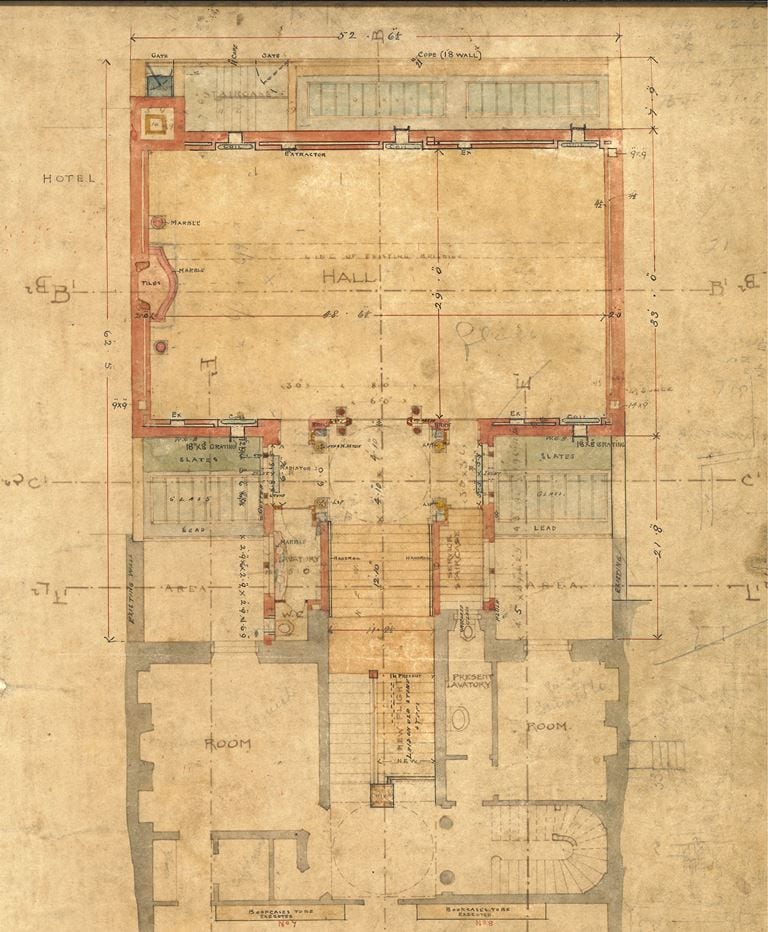This summer we updated the display panels in our historic Lower Library. This has long been one of the most popular rooms in the College’s St Vincent Street building, with fellows and members, visiting clinicians, event guests, researchers and tourists. It serves many functions, in addition to being a library. Everyone loves the Lower Library – so why did we change it?

The room became a library almost as soon as the College moved into this building in 1862, and it has retained this purpose and identity since then. We want to interpret our rooms’ historic value and potential – to engage visitors, to tell interesting stories, and to connect the past with the present. This is how heritage becomes a living, breathing part of who we are. So this room’s consistent purpose and identity really adds to its appeal and to its heritage potential.
We decided to focus the room’s story on this key period between the 1860s and the early 1900s. This is when the College moved to 242 St Vincent Street and began to adapt it, creating the library and turning its rooms into meeting and teaching spaces for its community of members.

In Glasgow this was a complex period of contrasting poverty, health inequalities, booming industry, business and wealth. In medicine it was a period of major public health challenges, and an exciting period of change and innovation. Advances in medical and surgical methods, practice and technology were evolving rapidly. Medicine and surgery were becoming more scientific, with an increasing focus on safer practice. The development of anaesthetic and antiseptic resulted in further experimentation in clinical, pathological and anatomical research. Much of this activity was driven by a new, younger generation of doctors working in Glasgow in the 1860s and 1870s. Emerging figures such as Joseph Lister, William Tennant Gairdner and William Macewen became leaders in their field at an early age.
New fields of enquiry were vibrant in Glasgow, with new treatments and discoveries regularly discussed and shared at meetings in the College building, and published in the Glasgow Medical Journal. This and other publications were regularly consulted in this library, its shelves bursting with the latest thinking in medical science.

Browsing the spines of the library’s books gives us a vivid picture of the learning our physicians and surgeons were engaged in during this period – emergency surgery, obstetrics, infectious disease, mental health, internal medicine, paediatric medicine, ear, nose and throat surgery, medical statistics, hygiene… Sound familiar?
The full College library, combining our historic library and modern clinical collection, can be searched on our catalogue.

The late 19th and early 20th century was also a period when the College grappled with the issue of gender inequality. Like many old institutions, it struggled to adapt to the changing medical landscape, which was becoming slightly more welcoming for women. In the 1880s women were allowed to sit examinations in medicine and surgery, but certainly weren’t considered part of the College’s community (and therefore wouldn’t have used the library) until well into the 20th century.
As well as these broad themes of the College’s role in Victorian medicine and surgery, the Lower Library re-display highlights the tangible heritage of our building and collections – which brings us back to the value and potential of this wonderful room. Its connection to this amazing period in history is celebrated in the new interpretation panels. And just as importantly, the themes chime with the College’s values and purpose in the 21st century – a worldwide community of inspiring health professionals working together to advance our profession and improve patient care.


Leave a Reply
You must be logged in to post a comment.